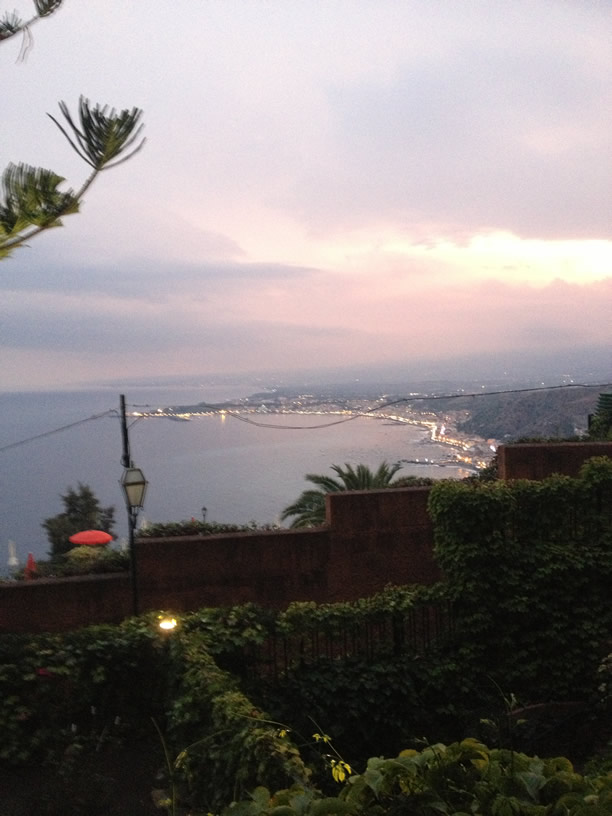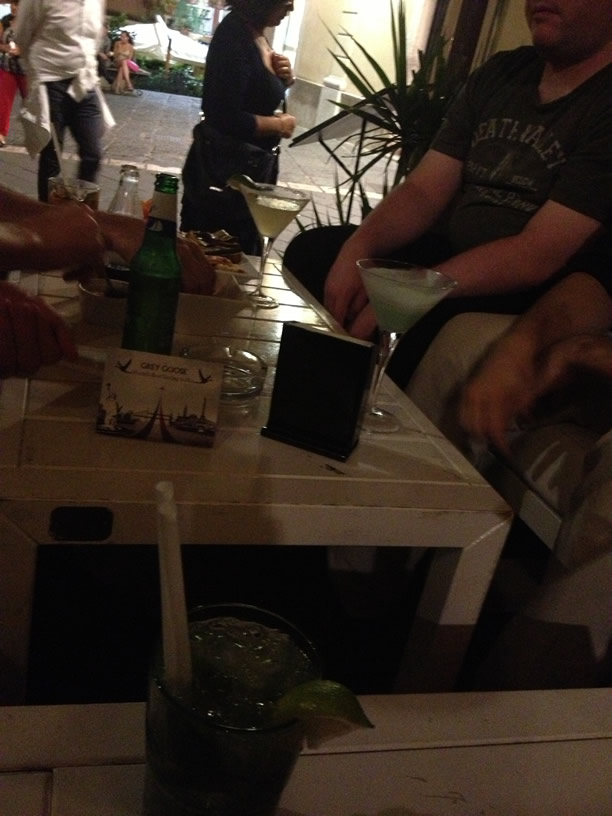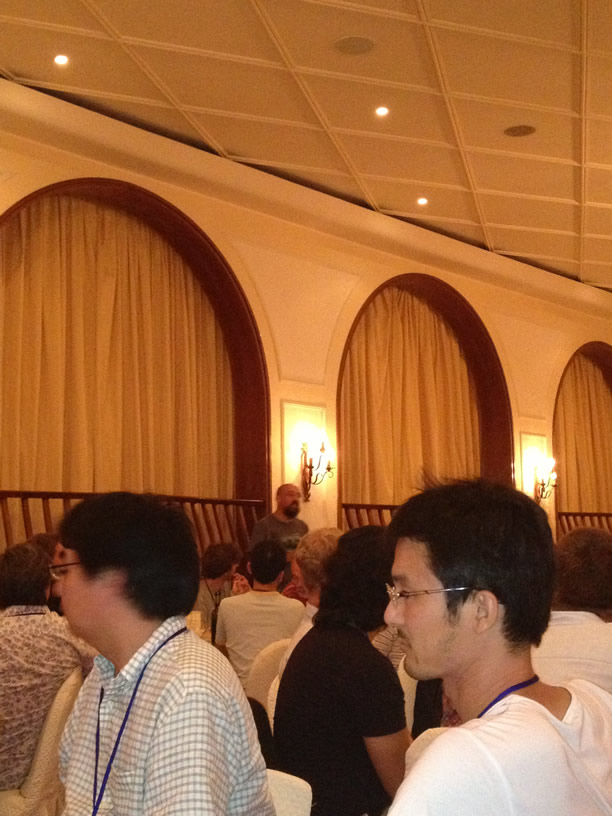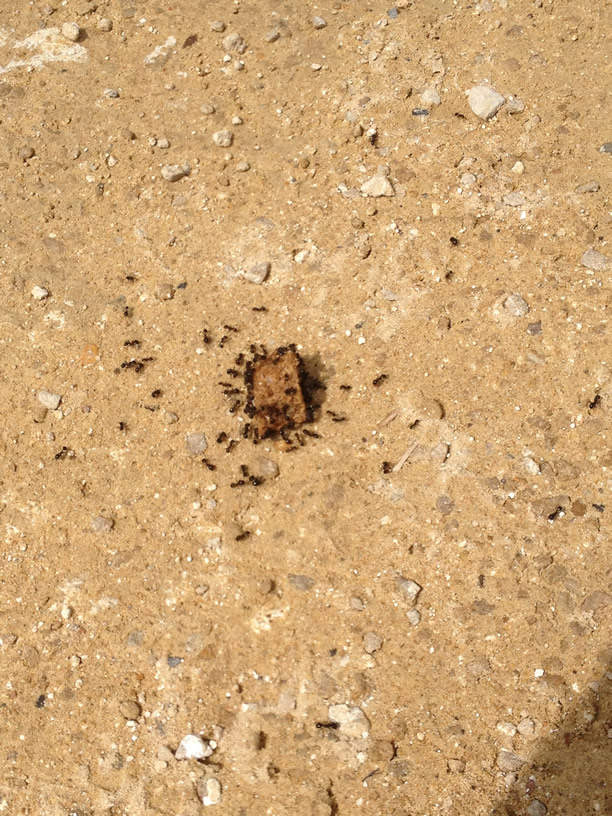[Impressions from ECAL 2013]
Added on 17/09/2013

I recently returned from Taormina, Sicily where I attended the ECAL 2013 conference. It was so amazing that I felt I had to share my experience from it on this blog.
The conference started with a number of workshops ran in parallel, and although I was quite interested in a workshop about swarm robotics, I chose to go to TRUCE, a meetup of scientists and creative writers. Being one of the 'scientists', I submitted my idea about how the world would look like in 2070 should my research be successful and a writer Robin Yassin-Kassab offered to write a story based on my vision of an evil government using insect-like robots and nanobots to spy on people and to kill them silently. Robin and me worked on the story that day and had amazing talks about many other things, like the current conflict in the Middle East, buddhism and the origin of the Universe. It was a really great start to the conference for me. The story will be published in a book with others from TRUCE sometimes next year, with my afterword next to it.
The following three days were full of interesting talks, at least half of them being about robotics. Sometimes I felt like I should split myself to pieces and send each piece to a different room in order to absorb everything. Well, unfortunatelly that was not possible, so I was stuck with carefully choosing the people to see. I was lucky enough to meet with Roman Miletitch from the Brussels university, who does his PhD on foraging robots, simulating them in ARGoS, a platform that I am seriously considering for my PhD as well. We had an evening of talking about swarms over drinks of Martini, and we couldn't believe how researchers can become isolated without knowing about each other's work.
My own talk on Controlling Ant-Based Construction went quite well, actually much better than I expected. Of course, the flow of the presentation that my supervisor Seth helped me perfect was a big part of the success. I don't know if it was the exhaustion and the lack of sleep, or the general mood of the conference, but for the first time ever I felt good presenting in front of a room full of people. Like I was supposed to be there.
There were some interesting keynote speakers as well, a talk about nanobots or intelligent playware is always welcome after a nice Sicilian lunch. By the way, the food everywhere was amazing, the coffee was even better, the wine tasted like it was made with care and don't even let me start about the Italian ice-cream! Most importantly, the people seemed truly interested in making you feel welcome, which was a nice change from the fake interest and smiles so often experienced in the UK. In general, I very much enjoyed my time there and the conference gave me a lot of perspective into what I am doing with my PhD. Thank you Southampton DTC for enabling me the trip!

I recently returned from Taormina, Sicily where I attended the ECAL 2013 conference. It was so amazing that I felt I had to share my experience from it on this blog.
The conference started with a number of workshops ran in parallel, and although I was quite interested in a workshop about swarm robotics, I chose to go to TRUCE, a meetup of scientists and creative writers. Being one of the 'scientists', I submitted my idea about how the world would look like in 2070 should my research be successful and a writer Robin Yassin-Kassab offered to write a story based on my vision of an evil government using insect-like robots and nanobots to spy on people and to kill them silently. Robin and me worked on the story that day and had amazing talks about many other things, like the current conflict in the Middle East, buddhism and the origin of the Universe. It was a really great start to the conference for me. The story will be published in a book with others from TRUCE sometimes next year, with my afterword next to it.
The following three days were full of interesting talks, at least half of them being about robotics. Sometimes I felt like I should split myself to pieces and send each piece to a different room in order to absorb everything. Well, unfortunatelly that was not possible, so I was stuck with carefully choosing the people to see. I was lucky enough to meet with Roman Miletitch from the Brussels university, who does his PhD on foraging robots, simulating them in ARGoS, a platform that I am seriously considering for my PhD as well. We had an evening of talking about swarms over drinks of Martini, and we couldn't believe how researchers can become isolated without knowing about each other's work.
My own talk on Controlling Ant-Based Construction went quite well, actually much better than I expected. Of course, the flow of the presentation that my supervisor Seth helped me perfect was a big part of the success. I don't know if it was the exhaustion and the lack of sleep, or the general mood of the conference, but for the first time ever I felt good presenting in front of a room full of people. Like I was supposed to be there.
There were some interesting keynote speakers as well, a talk about nanobots or intelligent playware is always welcome after a nice Sicilian lunch. By the way, the food everywhere was amazing, the coffee was even better, the wine tasted like it was made with care and don't even let me start about the Italian ice-cream! Most importantly, the people seemed truly interested in making you feel welcome, which was a nice change from the fake interest and smiles so often experienced in the UK. In general, I very much enjoyed my time there and the conference gave me a lot of perspective into what I am doing with my PhD. Thank you Southampton DTC for enabling me the trip!























Comments
[17/09/2013]
[17/09/2013]
:: [WEB]
{Please enable JavaScript in order to post comments}